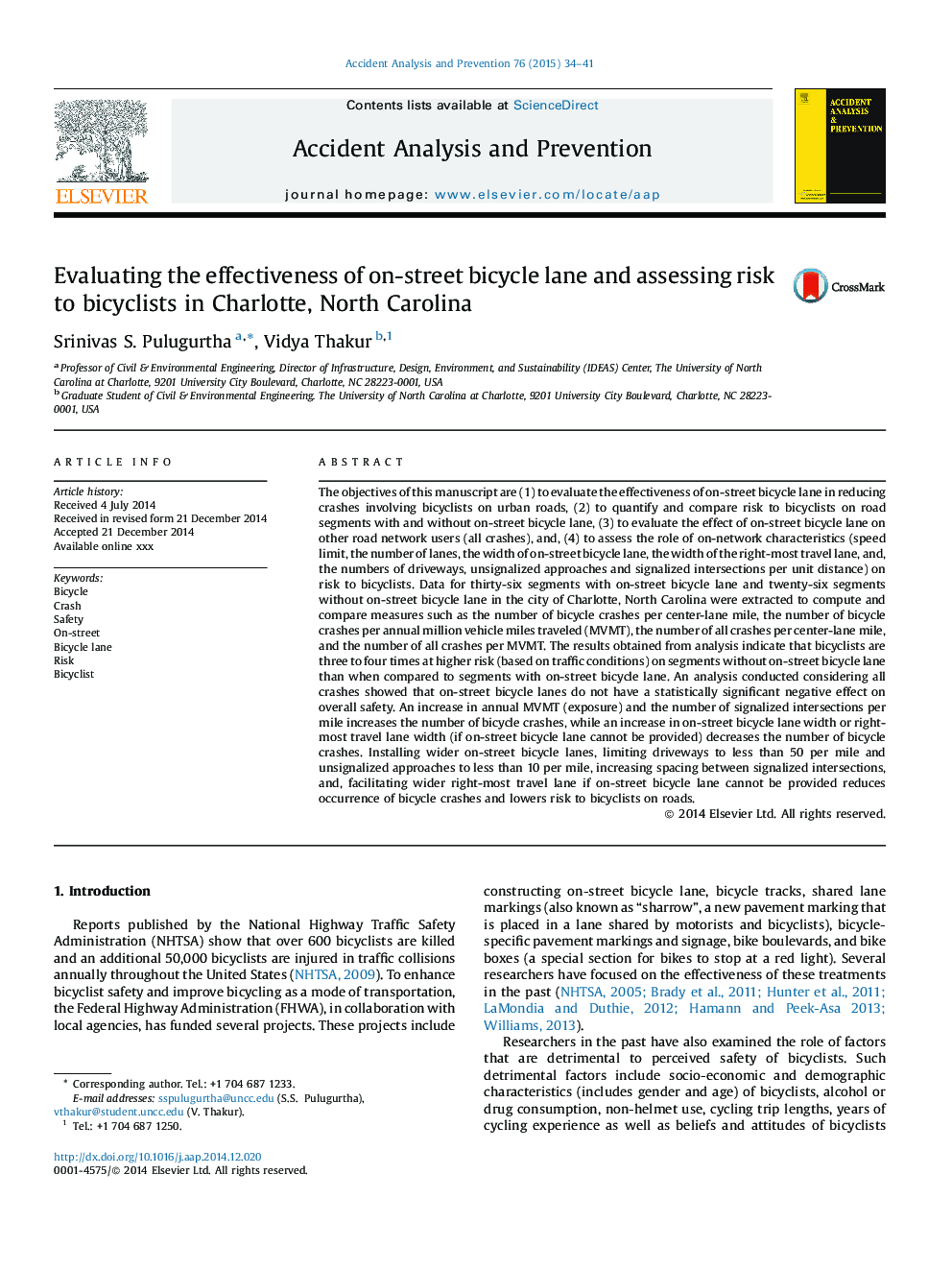| کد مقاله | کد نشریه | سال انتشار | مقاله انگلیسی | نسخه تمام متن |
|---|---|---|---|---|
| 6965701 | 1452921 | 2015 | 8 صفحه PDF | دانلود رایگان |
عنوان انگلیسی مقاله ISI
Evaluating the effectiveness of on-street bicycle lane and assessing risk to bicyclists in Charlotte, North Carolina
ترجمه فارسی عنوان
ارزیابی اثربخشی خط دوچرخه در خیابان و ارزیابی خطر برای دوچرخه سواران در شارلوت، کارولینای شمالی
دانلود مقاله + سفارش ترجمه
دانلود مقاله ISI انگلیسی
رایگان برای ایرانیان
کلمات کلیدی
دوچرخه، تصادف در، ایمنی، در خیابان، مسیر دوچرخه، خطر، دوچرخه سواری،
موضوعات مرتبط
مهندسی و علوم پایه
مهندسی شیمی
بهداشت و امنیت شیمی
چکیده انگلیسی
The objectives of this manuscript are (1) to evaluate the effectiveness of on-street bicycle lane in reducing crashes involving bicyclists on urban roads, (2) to quantify and compare risk to bicyclists on road segments with and without on-street bicycle lane, (3) to evaluate the effect of on-street bicycle lane on other road network users (all crashes), and, (4) to assess the role of on-network characteristics (speed limit, the number of lanes, the width of on-street bicycle lane, the width of the right-most travel lane, and, the numbers of driveways, unsignalized approaches and signalized intersections per unit distance) on risk to bicyclists. Data for thirty-six segments with on-street bicycle lane and twenty-six segments without on-street bicycle lane in the city of Charlotte, North Carolina were extracted to compute and compare measures such as the number of bicycle crashes per center-lane mile, the number of bicycle crashes per annual million vehicle miles traveled (MVMT), the number of all crashes per center-lane mile, and the number of all crashes per MVMT. The results obtained from analysis indicate that bicyclists are three to four times at higher risk (based on traffic conditions) on segments without on-street bicycle lane than when compared to segments with on-street bicycle lane. An analysis conducted considering all crashes showed that on-street bicycle lanes do not have a statistically significant negative effect on overall safety. An increase in annual MVMT (exposure) and the number of signalized intersections per mile increases the number of bicycle crashes, while an increase in on-street bicycle lane width or right-most travel lane width (if on-street bicycle lane cannot be provided) decreases the number of bicycle crashes. Installing wider on-street bicycle lanes, limiting driveways to less than 50 per mile and unsignalized approaches to less than 10 per mile, increasing spacing between signalized intersections, and, facilitating wider right-most travel lane if on-street bicycle lane cannot be provided reduces occurrence of bicycle crashes and lowers risk to bicyclists on roads.
ناشر
Database: Elsevier - ScienceDirect (ساینس دایرکت)
Journal: Accident Analysis & Prevention - Volume 76, March 2015, Pages 34-41
Journal: Accident Analysis & Prevention - Volume 76, March 2015, Pages 34-41
نویسندگان
Srinivas S. Pulugurtha, Vidya Thakur,
